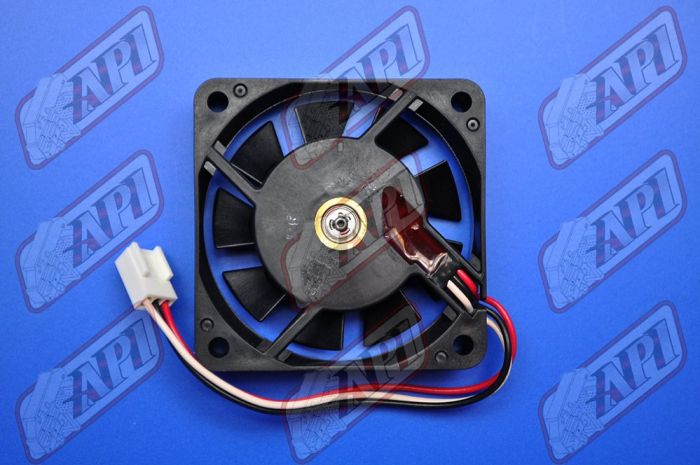AltPartsInc
Alternative Parts Inc. is the manufacturer and distributor of replacement parts for Amada Machinery and laser parts of leading brands like Amada Parts,Trumpf, Mazak, Bystronic, Prima Power, LVD Strippit, Mitsubishi, Cincinnati and Fanuc.
Fiber Laser: An Economical & Effective Choice for A Perfect Edge
In the laser cutting, there are two main types of lasers used in producing exceptional machinery parts. CO2 lasers and fiber lasers. While CO2 lasers have the advantage of producing superior edge quality, Fiber lasers are rising as innovative cutters in the industry. They are beneficial in metal cutting due to their non-reflecting beam. They cut quicker than their alternatives.
One of the major benefits of using fiber lasers is the clean, oxide-free edge you get as an end result. You can obtain it with nitrogen assist gas. As there will be no oxidation, it improves the downstream processes such as welding and powder coating which in turn helps achieve better adhesion and weldability.
You can further improve Fiber Laser's cut edge by making optimal changes in the assist gases and nozzle technologies.
Here is how to start!
Nitrogen Purity
Purity levels play a major role in the quality of edge and other parts. If you want to buy new ones, try searching for Amada Parts or Fanuc Parts online for quality products. If you know and understand what kind of expectations to set from purity levels, it can help achieve the desired quality for any part and other end goals. If you are working for industries such as medical and food-grade equipment which require a bright silver finish, then you need to set the purity levels to 99.9 percent.
If your targeted market is agricultural implements and powder coat adhesion in which your main focus areas include producing parts per day, then a lower nitrogen purity level between 98 to 99 percent will suffice the requirement. It is important to understand what you need in terms of level. This helps in sizing your nitrogen generator properly, at the beginning itself, to avoid edge quality glitches which later affects the overall performance. Moreover, using quality laser parts like Amada parts would also benefit in the longer run. You can also search for Fanuc parts online which fall into the same quality parts category.
Nitrogen Consumption and Costs
While operating any laser cutting machine, be it fiber or CO2, the consumption of nitrogen is always high. Several factors cause this issue. With the fiber’s upgraded technology, you have higher wattage ratings available which can easily process most of the materials. It might have been possible that your CO2 laser had a limitation in cutting mild steel with nitrogen assist gas at 3/16-inch-thick, or 7-gauge material. For example, A 4-kilowatt CO2 laser may have used 1700 SCFH (standard cubic feet per hour) to cut 3/16-in-thick or 7-ga. mild steel. And to cut ⅜ in-thick material, the gas consumption will double to 3,400 SCFH.

And with the Fiber’s technology, this limitation will no longer be a limitation as it can help expand the mild steel nitrogen procession range.
Nitrogen Consumption & Cut Edge
Nitrogen-generation systems reduce the cost of nitrogen and eliminate gas supply contracts. If you purchase your own nitrogen-generation system, it becomes easier for you to take advantage of the capital equipment depreciation which accelerates your ROI.
You can generate nitrogen by separating air into argon, oxygen, nitrogen, and CO2. It might come as a surprise, but the air we breathe contains only 21% of oxygen, a whopping 78% of nitrogen, 0.9% argon and some traces of Carbon dioxide & other gases.
Here are the most commonly used gas separation systems: Pressure swing adsorption, cryogenic fractional distillation (used to separate liquid air), and membranes.
- Adsorption system is the best method when higher delivery pressures and flow rates are a necessity. This system uses a carbon molecular sieve to absorb the oxygen molecules and produce the desired nitrogen assist gas. It can deliver higher gas pressure as well as higher SCFH flow rates.
- In the process of cryogenic fractional distillation of liquid air, the separation of gases takes place by cooling the air until it liquefies. These are the bulk tank systems that provide assist gases to the lasers and can deliver high purity levels. But these are usually energy-intensive.
- The membrane system contains hollow fiber membranes for creating a mechanical process to separate the air. It is possible because of the molecular-sized variance of the nitrogen and oxygen molecules. The structure of the membrane polymer allows the fast-moving water vapor and oxygen molecules to distribute through the membrane. And then captures the nitrogen as the product gas.
Generating your own nitrogen may accelerate your ROI. In most cases, you can achieve the ROI in less than two years. For the manufacturing units using multiple machines or running multiple shifts, achieving such ROI will be in less than 2 years. And once the company achieves ROI, they will be saving a lot on delivery fees, equipment rental fees, etc.
Not only an economical choice but for better results also, Fiber Lasers have it all. Also, using Amada Parts for your machines would maximize its productivity. There are cost advantages, superior quality and are safer than CO2 lasers.
